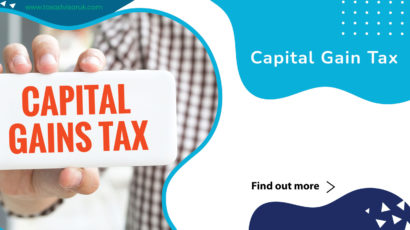Following the initial impact of the COVID 19 pandemic, both the UK economy and the construction sector began to recover. Many projects were postponed due to the epidemic in 2020. But, how did the construction business do in 2021, and what does the future hold for the industry in 2022? This blog provides an overview of the construction business in the United Kingdom, including statistics, forecasts, and trends.
UK Construction output statistics
In October 2021, construction output declined by 1.8 percent in volume, the greatest monthly drop since April 2020. From September to October 2021, new work declined by 2.8 percent, while repair and maintenance stayed steady at 0.0 percent.
Infrastructure and private new housing both declined 7.1 percent and 4.4 percent in October 2021, respectively; these decreases were somewhat offset by gains in private industrial and public other new work of 8.8 percent and 7.0 percent, respectively.
Construction output fell 1.2 percent in the three months to October 2021, in line with the monthly drop, due to a 1.5 percent drop in repair and maintenance and a 1.0 percent drop in new work (with new housing (both public and private), public other new work, and private commercial new work all falling).
Supply chain
Supply chain challenges are projected to persist in 2022, with the primary areas of supply issues being steel, concrete, lumber, and glass. Many of the concerns have been around material delays, which have caused projects to be delayed, and this is anticipated to continue in 2022.
Price rises
In 2022, raw material price increases will continue to influence the building industry. These price hikes were caused by product shortages that disrupted supply networks for components, and with supply concerns expected to persist in 2022, additional price hikes are likely.
Workforce
Workforce Constrictions caused by Brexit and the pandemic are still generating problems for the construction industry, and are expected to continue to do so in 2022 as people continue to self-isolate, a skilled labour shortage persists, and limits on foreign labour remain in place.
Workload
Optimism in the construction business has grown as workloads have improved in 2021, and there is still optimism in the sector as a whole. However, it is expected that the construction industry will see more ‘bumps in the road’ in 2022, making workload planning more difficult.
Commercial projects
In 2022, warehousing and logistics facilities are expected to be a development sector for the industry. The expansion of warehouse and logistics initiatives will be aided by the growth of online retail.
With more empty retail spaces, lacklustre consumer spending, and the expansion of internet retail, retail activity is expected to continue to drop for the next two years. In 2021, however, the trend of commercial properties being redistributed in favour of residential projects is expected to continue.
With retail suffering from low foot traffic and hefty business rates, and home working reducing the demand for larger offices, several developers are considering converting commercial properties to residential.
The pandemic is still wreaking havoc on the leisure and hospitality businesses. However, as the hospitality industry’s financial position improves, confidence is likely to climb, restoring sector activity over the next two years.
Because of the epidemic, there was a significant drop in office developments. However, it is expected that this will steadily increase. Companies are adapting their office spaces to accommodate changes in working methods, and office refurbishment initiatives are leading the industry. Companies are still assessing the impact of remote working and their prospective need for reduced office space, so new office projects are expected to take longer to recover.
Residential
Since the initial lockup, the housing market bubble has slowed. In 2021, property transactions and prices surged as a result of restrictions and remote working, which raised demand for larger homes.
With the temporary stamp duty reduction effect ending in 2022, and buyers’ confidence harmed by low earnings growth, increased taxes, and higher mortgage costs, this gain is projected to slow.
With more people accepting working from home as the norm, apartment buildings that incorporate hybrid work/living spaces may become increasingly common in 2022.
Public sector
Over the next three years, the Spending Review promised only modest increases in capital funding for various government departments.
Housing associations are expected to fuel social housing initiatives, which could result in a rebirth and increase in student housing.
Infrastructure and NHS projects are two areas of public sector building that appear to have the potential to be a growth driver for the construction industry.
Digital investment
Much of the construction industry is likely to continue investing in digital technologies to streamline operations, whether it’s for tender responses or cloud-based accounting and HR systems.
Summary
The epidemic has unavoidably changed the landscape of the UK building industry and where future growth will occur. Opportunities are likely to arise from warehousing and logistics, as well as office and retail refurbishing and commercial property repurposing.
Supply chain concerns and pricing rises must be considered and factored in by the industry today and in the future. The industry will continue to be impacted by labour shortages.
Projects and timelines are likely to be interrupted in the future, which can cause problems for contractors and construction organisations in terms of workload planning, turnover, and cashflow. It’s critical to consider this in your planning and aim to reduce risk by spreading your workload or staff across a wider number of projects or diversifying your customer base. Now is the moment to look over your supply chain and consumer base to make sure you’re not overexposed in any one region.
How TaxAdvisor UK can help
At TaxAdvisor UK , our experts will provide you 30 minutes free consultation and help you in managing all your tax and accounting work. Speak to our expert accountants, tax advisor on (0203) 5381276 or fill an online form today. We can have a consultation session over the phone, virtual or face to face meeting and will provide you with a no obligation fixed quote

















